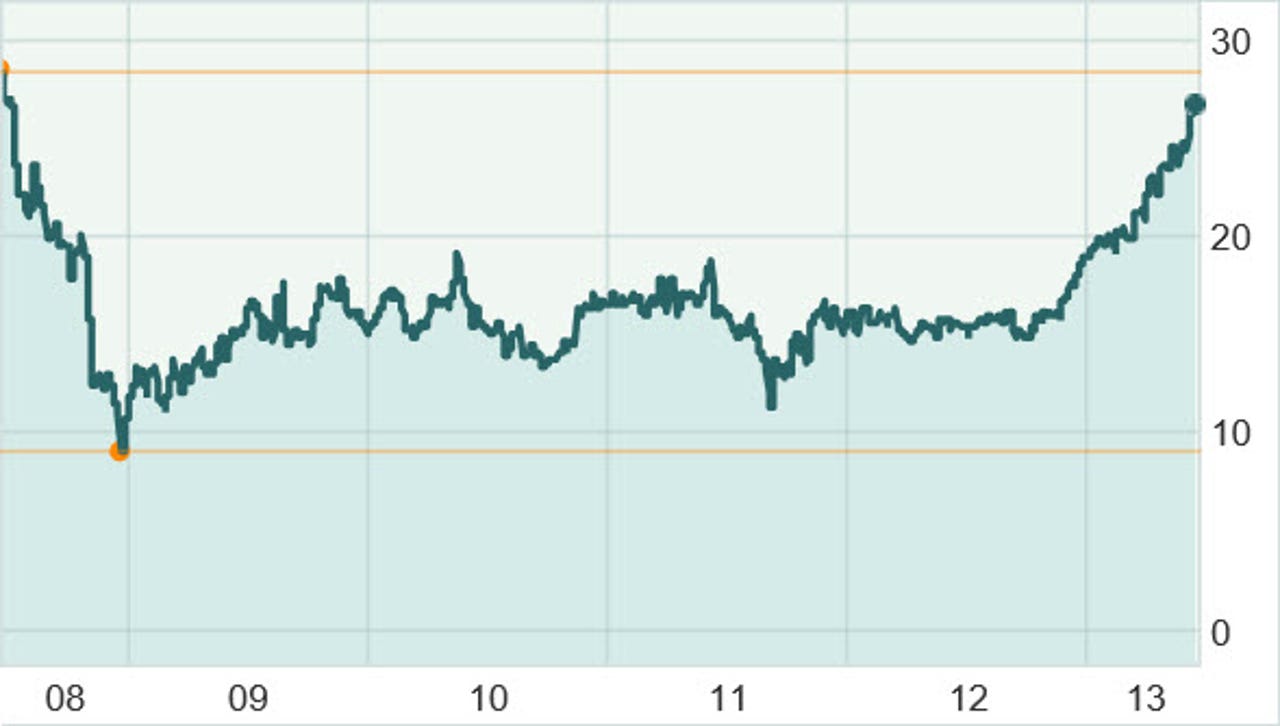How Microsoft dodged the Yahoo bullet

All the talk this morning is about what Yahoo did this weekend, spending more than a billion dollars to buy a domain full of animated cat GIFs and naughty pictures.
But it’s worth taking a look back at the company’s history. Five years ago this month, Yahoo turned down an unsolicited acquisition offer by Microsoft that would have netted YHOO stockholders $33 per share. If you owned Yahoo shares five years ago and decided to stay the course, it’s been a pretty miserable five years, as this chart attests:

Chart: Marketwatch.com
That might have been the biggest bullet Microsoft ever dodged. And it’s not just the $47.5 billion in cash that would have disappeared from the company’s bank accounts that would have been at risk.
The goal of a combined Microsoft-Yahoo was to compete directly with Google on advertising and search. It would have been the culmination of an acquisition spree in which Microsoft bought at least eight search and advertising related companies. And in an interview at the D6 conference five years ago this week, CEO Steve Ballmer still spoke bravely about advertising. But it was clear that drastic changes were afoot.
Given Google’s effective monopoly on search, it’s unlikely that adding Yahoo’s resources would have made a difference in total share. And that’s not just speculation. Three years ago, Microsoft and Yahoo signed a 10-year revenue-per-search deal that was supposed to create an effective Google competitor. It’s been a dud.
Instead, the failure to complete the Yahoo acquisition seems to have ended Microsoft’s dreams of being a giant in online advertising. There were no further acquisitions in that space, and last year Microsoft took a $6.2 billion writeoff of its biggest acquisition in that space, aQuantive.
What else would have happened if that acquisition had succeeded?
- Microsoft management would have been distracted during one of the most crucial times in the company’s history, as it recovered from Vista’s real and perceived problems and prepared to launch Windows 7 and Office 2010 (those two products were still nearly 18 months away from public release).
- Engineering resources would have been strained, at a time when much of the engineering work on multi-touch support for the next release of Windows was just beginning. Microsoft introduced multi-touch support in Windows 7 but it wasn’t fully integrated into the OS until Windows 8.
- On a global scale, efforts to protect online privacy would have spiraled downward. One of the unintended consequences of Microsoft’s failed acquisition was that it de-emphasized the ad business and eventually turned online privacy into a potential competitive advantage. In early 2008, Microsoft’s advertising division had enough clout to veto a genuinely innovative privacy feature in Internet Explorer. Today, Do Not Track is enabled by default in IE 10 and Microsoft is attacking Google publicly and privately on its privacy flaws.
- The efforts to make an ad-supported Office might have accelerated. Office 2010 included a Starter Edition (Word and Excel only) that was free with new PCs and ad-supported. Thankfully, Microsoft dropped Starter Edition completely in Office 2013, instead focusing on free Web apps as the right way to reach consumers.
After dropping its ambitions to become an online advertising giant, Microsoft chose to pursue a “devices and services” strategy instead. There’s no guarantee that this business model will succeed, but there’s also no question that Microsoft is better prepared to fight this battle than it would have been if it had been dragging around the weight of Yahoo for the past five years.